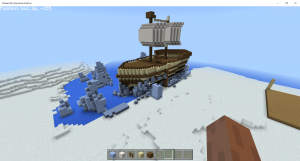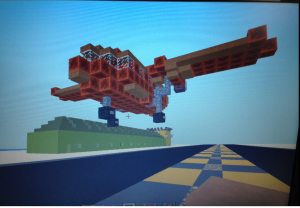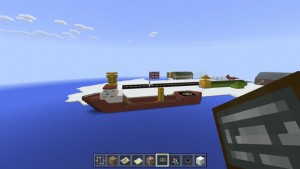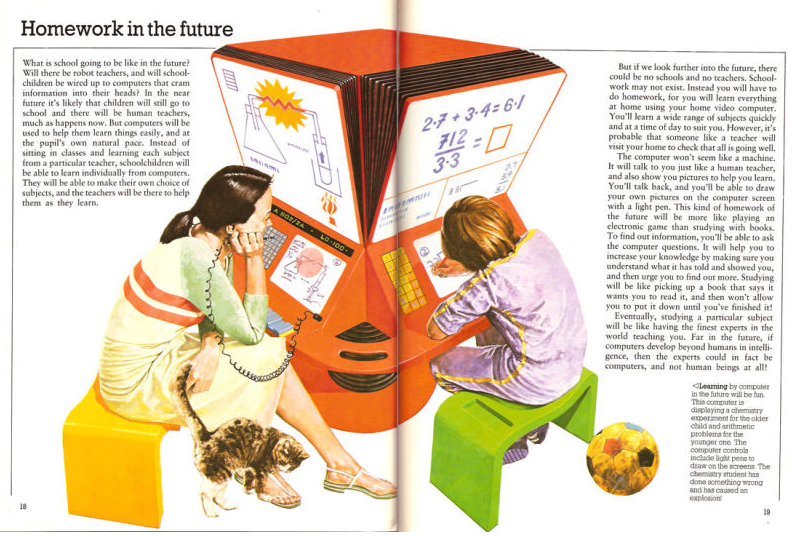Search Results for ""
16/06/2017
Excitement is building among the young Irish digital innovators of the future…. on Saturday they were able to showcase their creations in the Coolest Projects event in the RDS.
Two such teams of future Irish innovators are Sinead Herlihy’s 3rd and 4th Class from C.B.S Primary Michelstown in Cork and Tony Riley’s class from Lacken NS in Cavan. These classes have embarked on an exciting journey into distant Antarctica. While Tony’s class have been busy making an airstrip and building a research centre at the Rothera Research base on Adelaide Island, Sinead’s class have travelled back in time to work as a team to erect Tom Crean’s Discovery hut and build the ship that brought the explorer to Antarctica!

Tom Crean’s ship, built by Sinead’s class in Mitchelstown.
This immersion into the magical world of Antarctica is part of an exciting collaboration between Microsoft’s Minecraft Education Edition and CJ Fallon.
Microsoft have teamed up with CJ Fallon to bring curriculur aligned resources based on the world famous programme into Irish classrooms. The 140 million subscribers to Minecraft around the world will already be aware of the learning and fun involved in using the programme. Now, for the first time the fun and collaboration inherent in Minecraft is being linked directly to the Irish Primary school curriculum. This is a major development in the way ICT can be used in the classroom.

For pupils the benefits are obvious…. the SESE curriculum is brought to life. CJ Fallon have built the worlds in which the pupils will explore and create. These worlds have been carefully aligned to the SESE curriculum strands. They include Antarctica, Animal Kingdom, Qin Dynasty, Geography of Ireland, among others. As the class navigate and build within these worlds, they cross interdisciplinary strands of the curriculum, they work as a team in a project based way, and just as importantly – they have fun.
As all teachers know, planning, preparation and assessment are the backbone of every successful lesson. To this end, CJ Fallon are providing lesson plans, assessment tools and cuntais miosula to accompany the programme. The fact that the worlds are prebuilt by CJ Fallon ensures that teachers with ranging levels of digital expertise can provide an immersive and engaging lesson, one that challenges a class, not only in ICT, but in everything from social skills to literacy and mathematics. The teachers’ resources that accompany this curricular aligned Minecraft Education Edition give the teacher a finished project that is tangible, something that can be easily presented for assessment.
The programme has been specially aligned with CJ Fallon’s Small World, but can be used with any SESE textbook series.
Tony and Sinead’s classes have completed some great research and created some amazing artefacts in the Antarctic world while working on the prototype of this curriculur aligned Minecraft Education Edition – they showed their finished projects at the Coolest Project event. To find out how your class can get involved in next year’s nationwide piloting of the Minecraft Education/ CJ Fallon programme, click here.

31/01/2017
What’s this I hear about a new language curriculum in Irish primary schools?
Yes, the Minister for Education and Skills announced a new language curriculum for primary schools, covering both Irish and English, in December 2015. Teachers are currently receiving in-service on the first phase of the curriculum which is for classes from junior infants to second.
But didn’t we get a new curriculum in 1999?
Yes, but believe it or not that was almost twenty years ago. Ireland has changed a lot since then. Language and the modes of communicating have also changed. The only ones tweeting in 1999 were the birds! In 1999, the full curriculum was changed, all subjects were renewed and indeed some new subjects were added. It took a number of years for teachers to be fully in-serviced in all curriculum areas. After that the National Council for Curriculum and Assessment (NCCA) said that in future curriculum change would happen incrementally. Subjects would change from time to time but the big-bang that happened in 1999 wouldn’t happen again. Few in education circles disagreed. Curriculum change works best when it happens over time. So, that’s the reason we have just a new language curriculum being introduced now. Maths will be the next subject to change and the other subjects will be renewed in stages after that.
Why did they start with language?
Well language is at the centre of all learning. By talking, reading and writing we learn most things in life. So not only is it important for children to learn language but they also learn through language. Secondly, the languages used in Ireland have changed a lot in twenty years. Just listen to the variety of different languages used in any shopping centre nowadays, even in rural Ireland. Many children coming to our schools speak more than one language. This is a great richness that needs to be valued and celebrated.
So what are the new bits?
There are a number of significant changes in the new language curriculum. Firstly, the same curriculum structure is used for both English and Irish. The research shows that there are similarities in the ways children acquire all languages. So it’s good that the curriculum and language teaching are in line with the research. There have also been some changes in terminology and structure.
Don’t tell me they’ve got rid of the strands and strand units.
Well, yes and no. We still have the three strands – oral language, reading and writing, but the strand units are gone and the term “elements” is used instead. The elements, just like the strand units, describe the essential learning in each strand. The three elements can broadly be categorised as: communicating, understanding, using and exploring.
What else is new?
Well the NCCA took the opportunity to change the labels used for the different class groupings in primary school. For example, junior and senior infants are now described as being at stage one rather than level one. Stage two is first and second class and so on up to stage four, fifth and sixth class. The content objectives of the 1999 curriculum have been replaced by learning outcomes. There are far fewer learning outcomes than content objectives and the essential difference between the two is that content objectives focus on what the teacher will do to enable learning, while learning outcomes set out what children will be expected to know at the end of a two-year period. The other major new feature is the concept of a progression continuum. This describes the steps a child will take and the milestones they will achieve in their journey of language learning. The curriculum sets out in some detail the steps and expected milestones at various stages in the three strands of Irish and English.
So what help is provided for teachers?
Do you remember the separate book of teacher guidelines that went with each subject in the 1999 curriculum? Well, they’re gone! Instead a lot of support including samples of teachers’ and pupils’ work are provided in an online toolkit. For instance, a teacher in second class can go online and view samples of second-class children’s writing. They will then be able to use the samples to assess the work of children in their own class. Other supports in the form of videos, audio and printed material are provided. These will be added to as time goes on. In-service is also currently being rolled out to teachers across the country.
So, is CJ Fallon doing anything about this new language curriculum?
Of course. CJ Fallon, as the foremost publisher of educational material in Ireland, is right up to speed with the changes taking place. We’ve been keeping in touch with the developments as they were happening and our new Irish language programme Céim ar Chéim is fully in sync with the new language curriculum. Indeed all our publications are rigorously tested to ensure compatibility with the curriculum.
21/12/2016
It’s always difficult making predictions for the future – none more so than in technology and education. Just take a look at this article, every generation has its shiny new technology that will change education forever: 15 Technologies that were supposed to change education. Our particular favourite is number 13 – the Homework Machine from 1981!

Undaunted, we are going to make some predictions about what will have an impact on digital learning next year … or maybe the year after … or the year after that (you get the picture).
- Artifical Intelligence (AI) – such a broad area, AI has been around for a while and basically refers to anything where intelligence is exhibited by a machine. In real terms, AI can mean anything whereby a computer is displaying cognitive functions that we would normally associate with the human mind – driverless cars are a great example. In learning, the applications of AI are enormous, potentially covering everything from the grading of homework through to virtual tutors (a few of the examples that follow also incorporate some form of AI or machine learning);
- General Data Protection Regulation (GDPR) – many of the new innovations in digital learning require access to student data – and lots of it. This raises all sorts of issues around data privacy and data protection. The GDPR is a new EU Regulation that will enter into force in Ireland in May 2018 and provides a whole new set of rights for data subjects (e.g. learners), much more than our existing data protection legislation. Expect lots of activity in 2017!
- Personalisation – whilst personalisation technology is commonplace in retail and consumer markets, the holy grail of “personalised learning” has proven to be very difficult to achieve in practice. However, with access to more data points, larger and richer data sets and embracing the potential of machine learning, could 2017 finally be the year that personalized learning delivers on its promise?
- Speech Technology – think about it: our voices are our most natural user interface, yet personal voice computing is only just starting to go mainstream in consumer markets (for example, Amazon Echo and Alexa, Google Home). The applications in education are enormous – enabling us to incorporate the expressive voice as a form of interaction with mobile devices. From assessment of phonological awareness, through to command-control voice interaction with educational games.
- Augmented and Virtual Reality (AR/VR) – whilst very different technologies, what both AR and VR bring to the learning sphere are much more experiential and engaging educational opportunities. Now at more affordable levels, both AR and VR could be set to go mainstream in education in 2017;
- More agile, evidence-based research – after so many false dawns, 2017 might just be the year that we see more evidence-based research on the efficacy of using technology to support learning. This time last year, the OECD found that “school systems need to find more effective ways to integrate technology into teaching and learning”. To do so, we need more agile and responsive research with actionable insights.
Let’s see if we are right …
06/12/2016
The Programme for International Student Assessment (PISA) is a triennial international survey by the OECD. The results from the 2015 round of testing were released today. PISA tests 15 year olds from 72 countries on Science, Literacy and Mathematics.
The PISA testing takes a holistic approach to these subjects, grading students not on rote-learned facts but testing their problem-solving ability acquired through a broad spectrum of learning so as to determine how prepared they are for their future studies or working environment. The test is on skills not knowledge. Solving “real world problems” and creative thinking are major components and many of the questions focus on how students feel about school and studying. This time around, PISA has placed a greater emphasis on Science. It poses questions relevant to today’s world. Can our young people be scientific in the application of their knowledge? Do they weigh up all arguments and use critical and logical thinking to solve problems?
We now live in globalised societies, with a mobile workforce moving wherever particular skills are required. We can see this in our own country where in the last generation huge emphasis was placed on attracting some of the tech giants to establish headquarters here. We can use the PISA testing as an important yardstick with which to objectively measure our standard of education against international standards and, in turn, help to establish our future graduates in higher education and the jobs market.
Looking at the last two sets of results from 2012 and 2015, what are 5 things that we can learn from today’s release?
- In 2012, Ireland scored 523 points in reading while the international average is 496, putting our ranking in that area at 13th;
- In the results released today and based on the 2015 test, Ireland has jumped dramatically to 5th place in reading;
- With only Finland (ranked fourth) ahead of us for reading in Europe, our teaching and learning of literacy is an area where we excel;
- This year Ireland stayed above the OECD and European averages in all subjects;
- In Science we’ve dropped slightly since 2012 and now hold a ranking of 19th out of the 72 countries tested.
And, so, while it is heartening to see Ireland’s scores in all three areas above the OECD average, it is also important to remember that there are many variables to PISA testing and the granularity of the results are intricate. PISA maps each result not just by score in each area but breaks down these results in terms of gender disparity, attendance record, happiness in school, etc. To look at all of this in detail and map Ireland’s results check out the PISA website.




